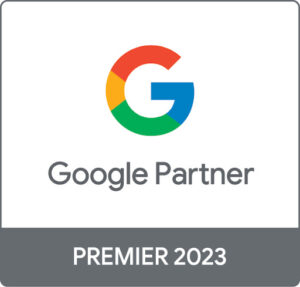To ensure you provide users with the best page experience, having an understanding of all Google page experience signals will help you to improve your website’s performance on search engine result pages (SERPs).
This is what Google has to say about page experience: “Page experience is a set of signals that measure how users perceive the experience of interacting with a web page beyond its pure information value”. Google still maintains that providing great content is essential and that providing an excellent page experience doesn’t outweigh having great content. However, page experience is still an important factor in SEO. So, let’s dive into what Google considers as page experience signals.
Google Page Experience Signals
Core Web Vitals
Core Web Vitals are a set of metrics that are related to speed, responsiveness and visual stability. Core Web Vitals are made up of the three-page speed and user interaction measurements listed below. You can check your Core Web Vitals score by using this tool.
Largest Contentful Paint (LCP)
Largest Contentful Paint (LCP) measures when the largest content element in the viewport becomes clear and visible. LCP can be used to determine when the main content of the page has finished rendering on the screen. To deliver a good user experience, LCP should occur within 2.5 seconds of when the page first starts loading.
First Input Delay (FID)
First Input Delay (FID) captures a user’s first impression of a site’s interactivity and responsiveness. FID measures the time from when a user first interacts with a page to the time when the browser is able to respond to the interaction. To deliver a good user experience, pages should maintain a CLS of less than 0.1.
Cumulative Layout Shift (CLS)
Cumulative Layout Shift (CLS) measures the sum total of all individual layout shift scores for every unexpected layout shift that occurs during the entire lifespan of the page. A layout shift occurs any time a visible element changes its position from one rendered frame to the next. To provide a good user experience, pages should maintain a CLS of less than 0.1.
Core Web Vitals is a new Google page experience signal and within the next few months a lot of focus will be put on the above metrics. Core Web Vitals shouldn’t be your only focus though as there are a lot more page experience signals that will affect your website’s ranking on search engine result pages (SERPS).
For more information about giving your site health check a spring clean, or for a full technical audit – please visit our page here.
Mobile-Friendly
Google uses mobile-first indexing which means that Google primarily uses the mobile version of your website for indexing and ranking. Therefore, there is more emphasis now than ever to have a fully responsive website across all devices including, mobile, tablet and desktop.
You can check if your website is mobile friendly by using Google’s mobile friendly testing tool. If your page isn’t mobile friendly, there are a few improvements you can make to ensure it is.
Remove Pop Ups and Ads That Block Content
Pop ups and ads can be an excellent marketing tool, but on a small mobile screen they can block important content and media. If you want to create a positive page experience then you should avoid using large ads or pop ups as it can frustrate users and leave them going elsewhere.
Ensure Content Is Easy To Find
Ensuring information is quick and easy to find is vital to provide users with a positive page experience on mobile devices. It’s good practice to have an idea of what pages are important on mobile. For example, if you’re a cafe or restaurant then users could be more interested in finding opening times and menus rather than blogs. If you’re unsure on what users are looking for on mobile then you can use Google Analytics’ behaviour segment and discover how mobile users are interacting with different pages.
Ensure Website Is Responsive
Having a responsive website that works efficiently on both desktop and mobile devices is the best way to ensure you provide excellent page experience. A responsive website is ideal as it provides the same content across all devices.
Regularly Check Website On Mobile
The best way to ensure your website provides a good mobile experience is to regularly test it yourself using a mobile device. Regular testing and visiting your website on a mobile device is the best way to spot any issues that are creating a poor experience for your users.
Every year people spend more time on their mobile and tablet devices, therefore ensuring your website is designed to tailor for different screen sizes and load times will guarantee users will have a positive page experience, no matter what device they view the website on.
Safe Browsing
To provide a positive Google page experience it’s vital that your website doesn’t contain any malicious content or malware. You can check to see if your website has any unsafe browsing issues by using Google’s security issues report.
HTTPS
Making sure your page is served over HTTPS will help users have a positive page experience when visiting your website. You can check if your site’s connection is secure by using a web browser such as Google Chrome.
If you open a page in chrome, to the left of the web address you will be able to see either a padlock, an information or not secure notification or a not secure or dangerous notification. Below is what these notifications mean.
Padlock
A padlock means that information you send or receive from the website is private. This generally means that your website is safe to visit and that Google chrome trusts the SSL certificate being used.
Information or Not Secure Notification
If you receive an information or not secure notification, then this usually means that the site isn’t using a private connection and someone might be able to see or change the information you send or receive from this site.
Not Secure or Dangerous
If the site is not secure or dangerous then it’s vital that you don’t enter any private or personal information on any pages across the site and if possible, don’t use the site at all. Using any sites that are marked as not secure or dangerous will more than likely put your private information at risk.
No Intrusive Interstitials
Intrusive interstitials are usually something that obscures the main content on a page. This can frustrate and irritate users because they are unable to access the content they were expecting when clicking on a search result or navigating the website. Pages that show intrusive interstitials provide a poor page experience compared to pages where content is immediately accessible. Pages where content is not easily accessible to a user may not rank as highly, below are some examples of Intrusive interstitials.
- Showing a pop-up that covers the main content
- Displaying a standalone interstitial that the user has to dismiss before accessing the main content
With the new Google page experience algorithm update due to launch this month, putting a focus on page experience has never been more important. It can be easy to loose focus on page experience while focusing on other aspects of SEO such as building backlinks or creating high quality content. However, ensuring your site has a positive page experience is a great way to improve organic search performance and should never be overlooked.
Contact Us
If you would like to find out more information about technical SEO or If you think your website provides a poor page experience and you’d like to know more about how we can help, please contact us by calling 01273 286 616 or emailing enquiries@helloseed.co.uk.









